#Conoclinium coelestinum
Photo


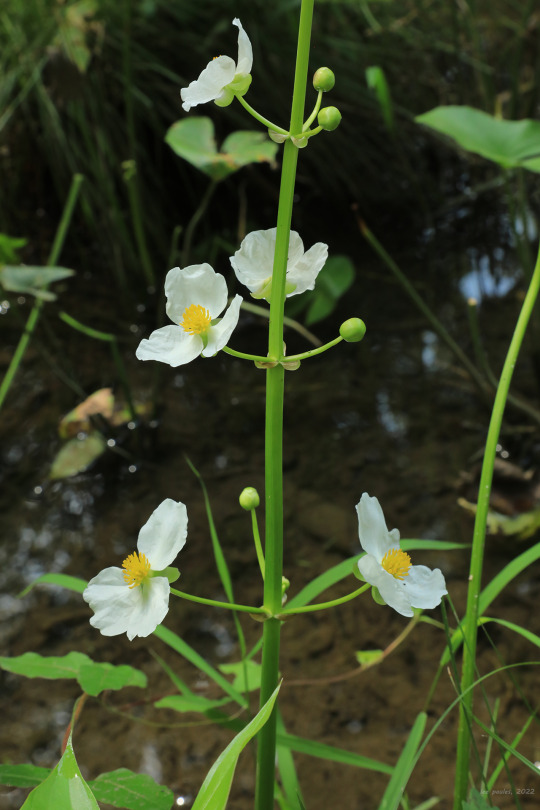

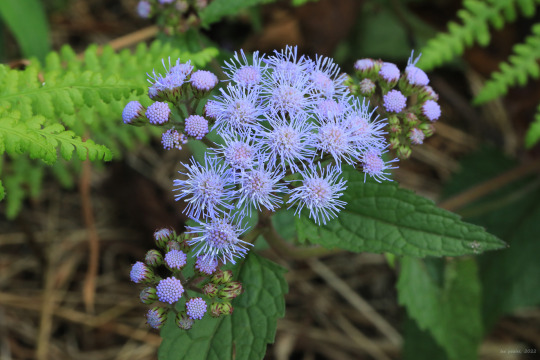



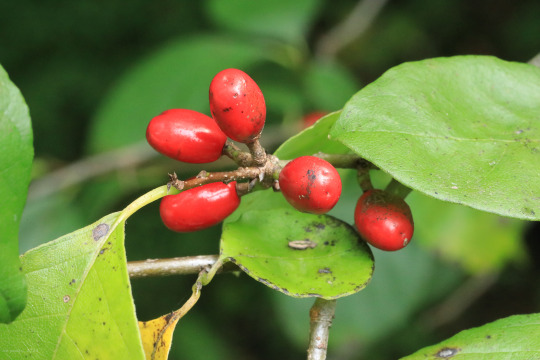
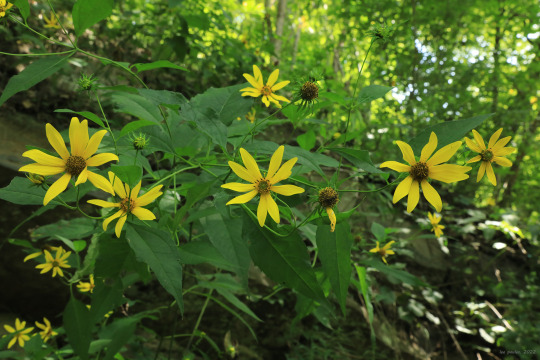
Photos from a late summer bike ride on the Mon River Trail. With autumn just around the corner, the climatic, life-sustaining ceremonies of the season have taken on a frantic, bittersweet urgency, from the proliferation of late summer blooms to the frantic chirrups of insects in search of mates before they succumb to the first frost of October. As the deep greens of summer fade and begin to sacrifice themselves to a fiery self-immolation, I salute Nature’s relentless push to plant the seeds of next year’s renewal.
From top: broadleaf arrowhead (Sagittaria latifolia), also known as duck-potato and wapato, an attractive aquatic plant whose edible tuber was an important source of starch for Native Americans; great blue lobelia (Lobelia siphilitica); a showy relative of cardinal flower with blue, split-lip flowers; blue mistflower (Conoclinium coelestinum), also known as wild ageratum and blue boneset, an unusual late summer aster with disc flowers only; tall coreopsis (Coreopsis tripteris), also known as tall tickseed, a grand, stately perennial up to 8 feet tall with distinctive tripartite leaves; a goldenrod soldier beetle (Chauliognathus pensylvanicus) navigating a wingstem flower (Verbesina alternifolia); northern spicebush (Lindera benzoin), a colonizing shrub whose luminous yellow leaves in fall contrast with its brilliant-red, aromatic berries; and pale-leaved sunflower ( Helianthus strumosus), a perennial sunflower whose leaves are mostly opposite in arrangement with long petioles and pale undersides.
#appalachia#vandalia#west virginia#mon river trail#late summer#life#renewal#flora#wildflowers#insects#sagittaria latifolia#broadleaf arrowhead#duck-potato#wapato#lobelia siphilitica#great blue lobelia#conoclinium coelestinum#blue mistflower#wild ageratum#blue boneset#coreopsis tripteris#tall coreopsis#tall tickseed#chauliognathus pensylvanicus#goldenrod soldier beetle#verbesina alternifolia#wingstem#Lindera benzoin#northern spicebush#helianthus strumosus
100 notes
·
View notes
Text

自宅近くの住宅の花壇で咲いていた、
「アオバナフジバカマ(青花藤袴)」と言う名前の
紫色の花。
別名:セイヨウフジバカマ(西洋藤袴)、
ユーパトリウム・コエレスティヌム、
コノクリヌウム・コエレスティヌム。
欧文名:Conoclinium coelestinum
34 notes
·
View notes
Text
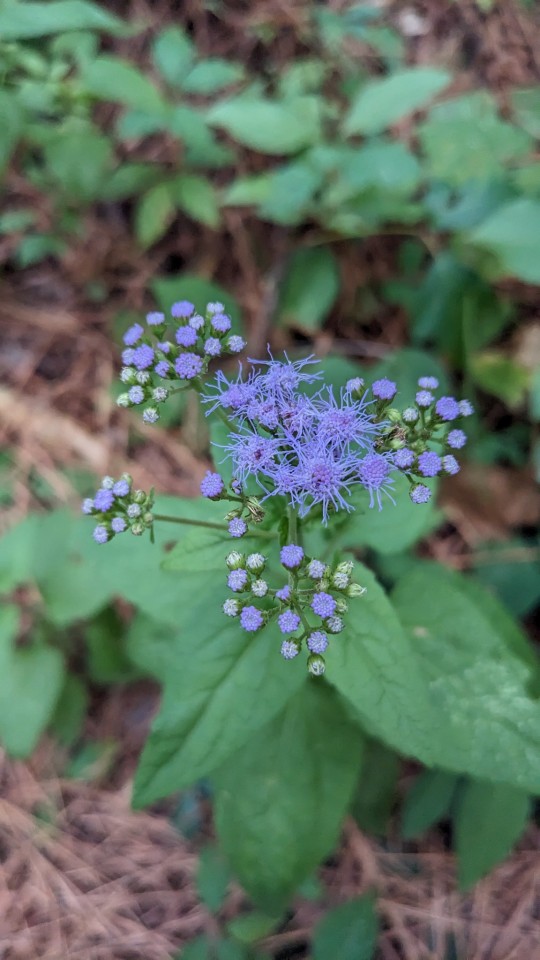
Conoclinium coelestinum / Blue Mistflower at the Sarah P. Duke Gardens at Duke University in Durham, NC
#Conoclinium coelestinum#Conoclinium#Blue Mistflower#Mistflower#Wild ageratum#Blue boneset#Native plants#Native flowers#Nature photography#photographers on tumblr#Sarah P. Duke Gardens#Duke Gardens#Duke University#Durham#Durham NC#North Carolina
3 notes
·
View notes
Text

Blue[ish] Mistflower .. [2 / 2]
A variant of Conoclinium coelestinum growing far from its ostensible home in North America, on St.Mary's Island near Malpe, KA.
#Panasonic#Lumix#ZS-7#botanical#St.Mary's Island#Malpe#Udupi#Karnataka#India#cropped#flora#mistflower#Conoclinium coelestinum#looking down
0 notes
Text
MIDWEST/EAST US: I have the following native flower (and one grass) seeds available for cost of shipping, all harvested from either my garden or from nearby parks in small amounts. if you're interested please kofi me here and shoot me a message with your address and what you'd like! amount/availability may vary but I would like to share as much as possible.
before requesting please make sure the seeds you want are native to your state! prairie moon has range maps for many of the species here; otherwise a quick search of the scientific name should let you know.
seeds I have:
-Cup plant (silphium perfoliatum)
-Common milkweed (asclepias syriaca)
-Swamp milkweed (asclepias incarnata)
-Honeyvine milkweed (cynanchum laeve)
-Maypop (passiflora incarnata)
-Bee balm (monarda fistulosa)
-Foxglove beardtongue (penstemon digitalis)
-Purple coneflower (echinacea purpurea)
-Missouri coneflower (rudbeckia missouriensis)
-Showy sunflower (helianthus pauciflorus)
-Cliff goldenrod (solidago drummondii)
-Meadow blazing star (liatris ligulistylis)
-Common evening primrose (oenothera biennis)
-Blue sage (salvia azurea)
-Little bluestem (schizachyrium scoparium)
-Blue mistflower (conoclinium coelestinum)
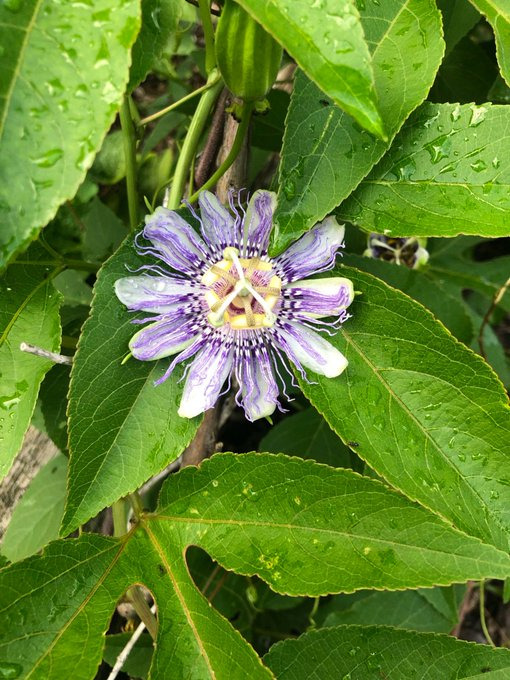

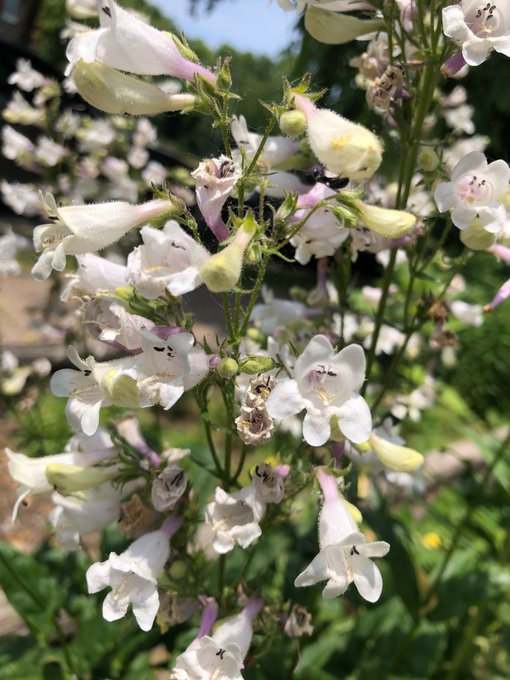

#plants#gardening#native plant gardening#native plants#flowers#prairie plants#free#maypop#sunflower#milkweed#insect gardening#bigeelsplantposting
12 notes
·
View notes
Text
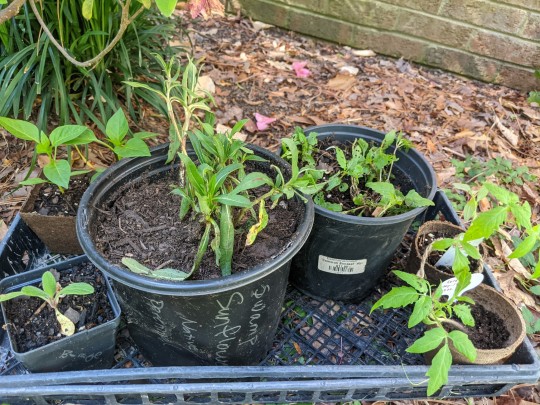
I went to a plant swap today! Got to chat with some gardening ladies, gave away some mint & comfrey & Jerusalem artichokes, plus field pea seeds, and picked up some fun stuff for my gardens.
Left front is borage (Borago officinalis), which I've grown before & found to be easy & nice to have, though I don't particularly want to eat the leaves. They taste nice, but they're unpleasantly fuzzy. Perhaps I'll do fancy things with the flowers - bees like them, too!
Back left is a couple of sweet peppers - "Lipstick" variety, I think.
Big guys in the middle are swamp sunflower (Helianthus angustifolius) and blue mistflower (Conoclinium coelestinum), and behind those are hiding a couple of little pink coneflower plants (Echinacea sp.).
On the bottom right, two Amish paste tomatoes.
I'm not sure where I'll put the flowers yet - start a flower bed somewhere, or just in the fenced vegetable garden where they won't be in danger of getting mowed? - but they can sit in their pots for a few days while I decide.
13 notes
·
View notes
Text
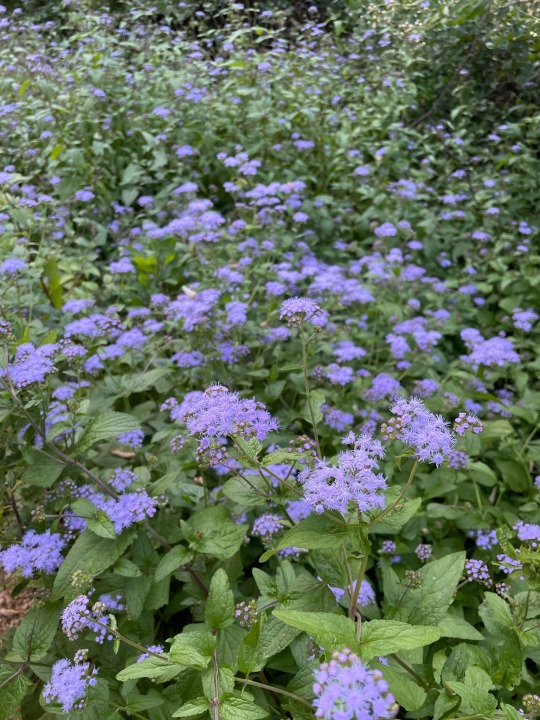
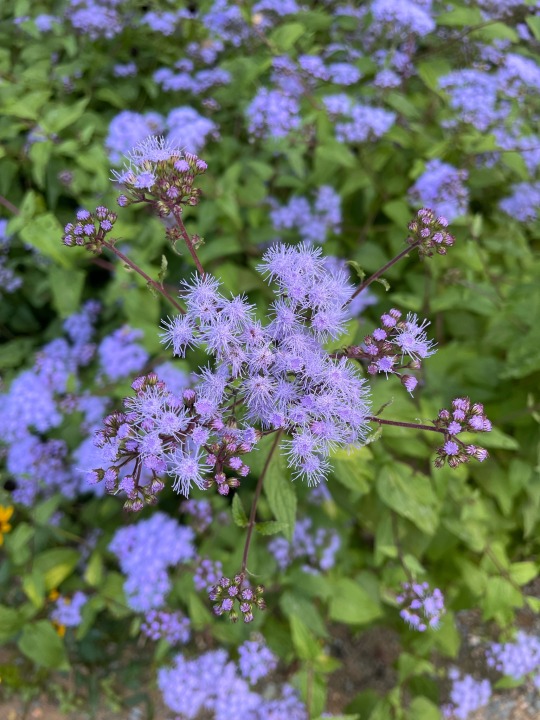

Conoclinium coelestinum, Asteraceae.
Blue mistflower is hardly a piedmont exclusive — it grows wild from Tepoztlán to Toronto and beyond — but it does quite well here. Sand-heavy stream cuts, forest edges, butterflies, and bees aren’t exclusive here either, but all of the above do well in concert.
I’m more experienced with C. dissectum (≡C. greggii) from my time in Texas and the further southwest. That’s sometimes saturated enough it hurts to look at. This stuff is practically always saturated enough it hurts to look at; feels like a blacklight with leaves. Anthocyanins can, in fact, fucking get it.
Thanks for the pictures goes to @krieper, who completed her Big Move and is consequently wiped. Consider this post interference for her weekly personal photo post, which will return in time. Hoping to take her stomping out to see Flue soon, so maybe a guest feature.
19 notes
·
View notes
Text
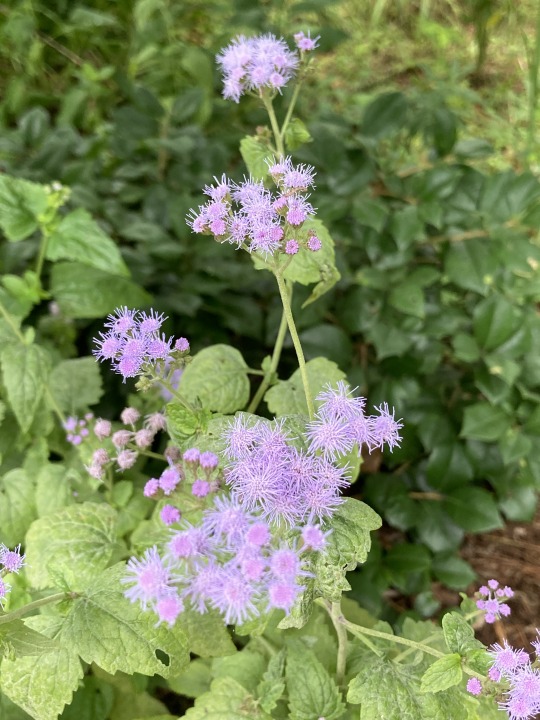
Blue mistflower (Conoclinium coelestinum)
3 notes
·
View notes
Text



Field journal 📔
ID: Praxelis clematidea
Common name: n/a
🚨Invasive in FL
💜
While this flower is pretty, it is best enjoyed in its native range of Argentina, Bolivia, southern Brazil, and some other parts of South America.
💜
Praxelis clematidea spreads quickly, and like many other non-native plants, it can disrupt the ecosystem, threatening the plants and animals that are supposed to be in a certain area.
💜
I initially had a hard time distinguishing this from our native mistflower (Conoclinium coelestinum), so I went back to get a closer look at the plant. The hairy stem clued me in, and if I wanted further confirmation, I could have crushed a leaf to see if it emitted a foul odor of cat urine.
💜
This plant was first observed in Florida in 2006. It was found in an abandoned orange grove here in Orange County and thought to have been accidentally imported as part of a shipment of landscaping products. Since then, it has spread and has been observed in 13 counties in Florida.
💜
📍Orange County, FL
🔍
#florida #hike #nature #naturelovers #outsideisfree #naturalist #orangecounty #LoveFL #botany #orlando #invasiveplants #flawildflowers #autumn #fall #flowers #wildflowers
1 note
·
View note
Text
Blue Mistflower (Conoclinium coelestinum (L.) DC.)
Asteraceae/Compositae (Aster/Composit Family)
Synonym(s): Wild Ageratum, Blue Boneset
Base Flower Color: BlueReproductive Phenology: Jun, Jul, Aug, Sept, Oct, NovNotes: Blue Mistflower attracts bees and butterflies. However, this wildflower spreads quickly and can become a pest.
For more information about this plant, Click Here.
Similar Species: Pink Thoroughwort (Fleischmannia incarnata…

View On WordPress
0 notes
Text
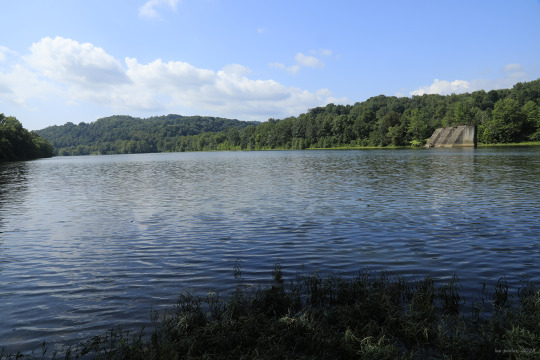
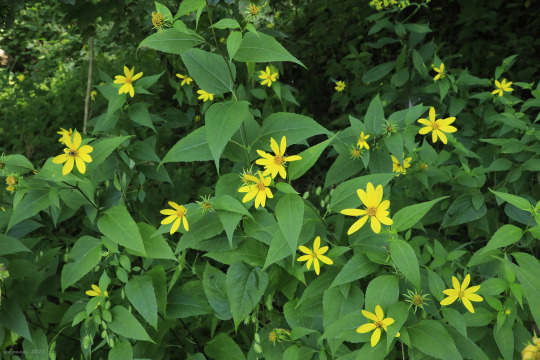

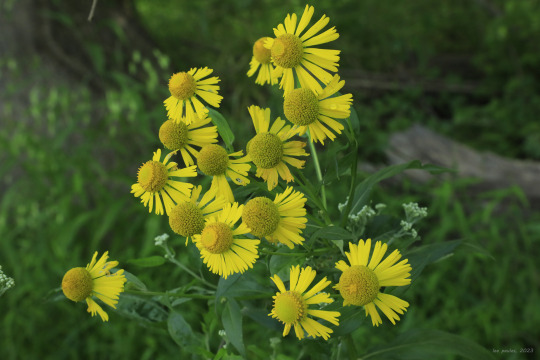
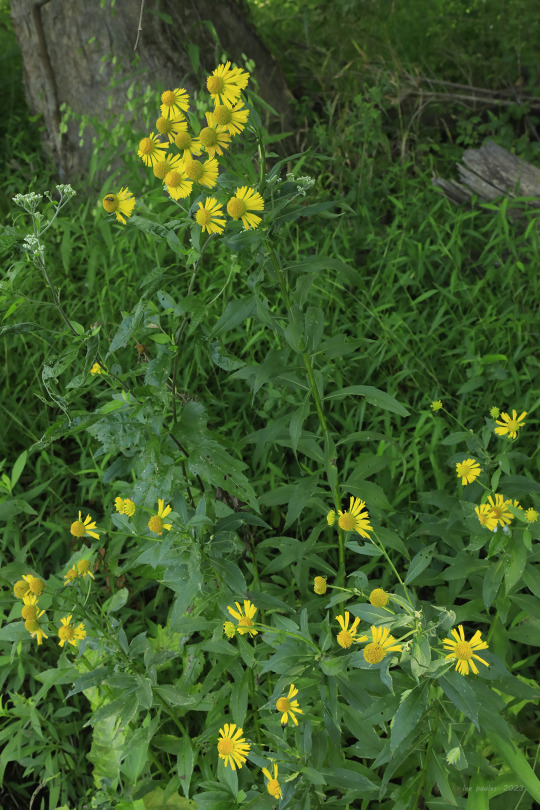

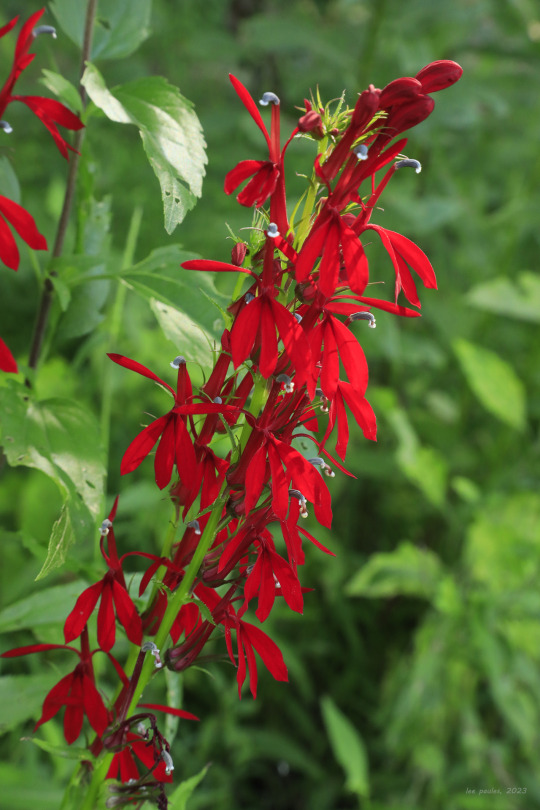

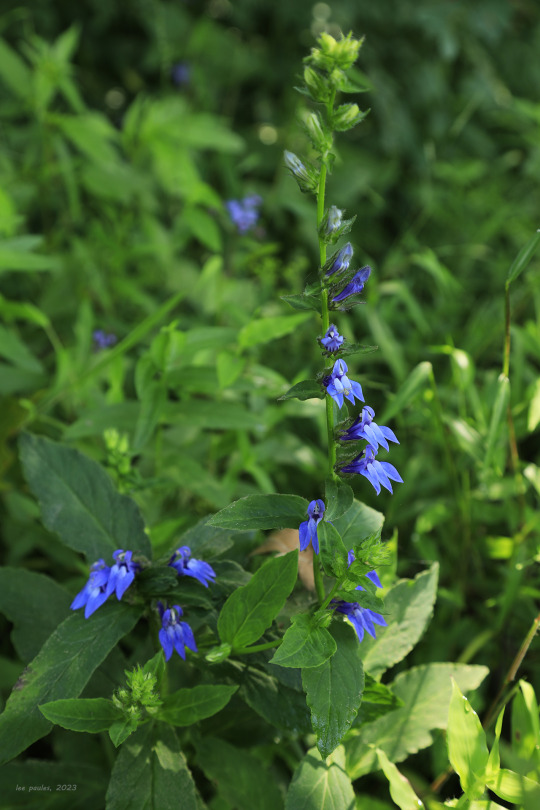

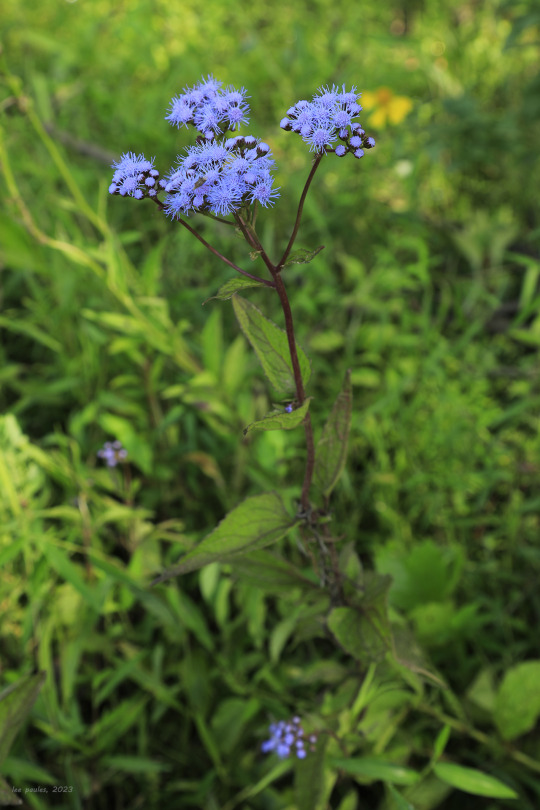
A selection of late summer wildflowers growing in the riparian zone along the Monongahela River at the Friendship Hill National Historic Site.
From top: Paleleaf woodland sunflower (Helianthus strumosus), also known as pale-leaved sunflower, distinguished by long leaf petioles and a pale leaf underside; common sneezeweed (Helenium autumnale), a water-loving aster whose dried leaves were once used to make snuff; cardinal flower (Lobelia cardinalis), whose scarlet, five-lobed flowers draw hummingbirds as pollinators; the closely-related great blue lobelia (Lobelia siphilitica), which early settlers once used as a treatment for syphilis (wishful thinking); and blue mistflower (Conoclinium coelestinum), or wild ageratum, a native aster that has become popular as a garden plant.

As a note, about a dozen sunflowers call NC-WV - SW PA home and they readily hybridize, often complicating identification. Pale-leaved sunflower has a tall, branching structure up to 7 feet in height and dense clusters of large flowers. In addition to long petioles and a pale leaf underside, this sunflower has a smooth stem with a whitish bloom to it. It's a very beautiful mid-to-late summer aster and one of my favorite wildflowers of Central Appalachia.
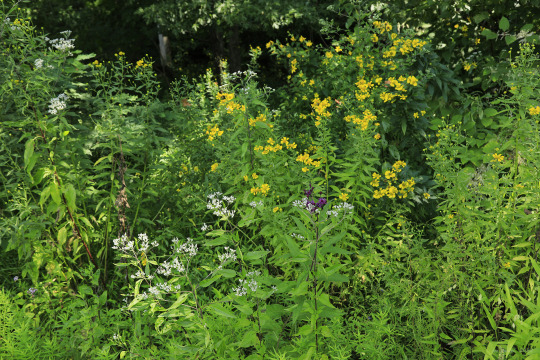
#appalachia#vandalia#wildflowers#flora#summer#pennsylvania#monongahela river#friendship hill national historic site#pale-leaved sunflower#paleleaf woodland sunflower#paleleaf sunflower#common sneezeweed#cardinal flower#great blue lobelia#blue mistflower#mistflower#wild argeratum#riparian
131 notes
·
View notes
Text

The colors in my garden bring me joy.
Some floppy hollow joe-pye (Eutrochium fistulosum), scaly blazing star (Liatris squarrosa), mistflower (Conoclinium coelestinum), and gray goldenrod (Solidago nemoralis).
Virginia, USA
1 note
·
View note
Text
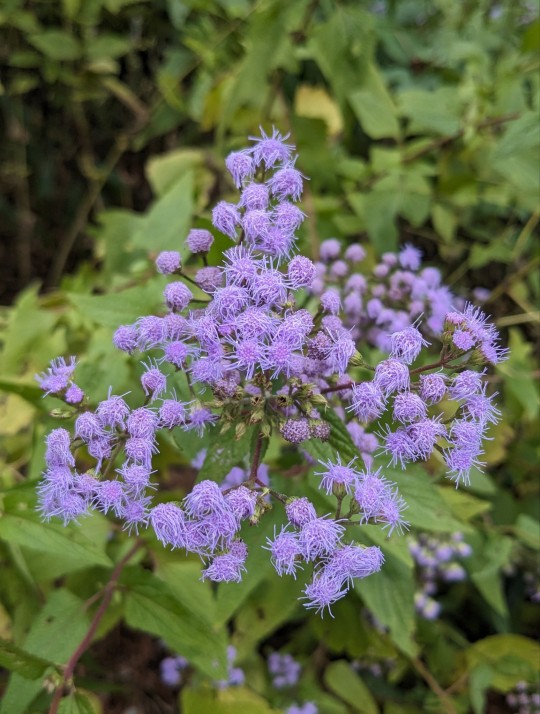
Conoclinium coelestinum / Blue Mistflower at the Sarah P. Duke Gardens at Duke University in Durham, NC
#Conoclinium coelestinum#Conoclinium#Blue Mistflower#Native plants#Native flowers#Flowers#Nature photography#photographers on tumblr#Sarah P. Duke Gardens#Duke Gardens#Duke University#Durham#durham nc#North Carolina
0 notes
Text
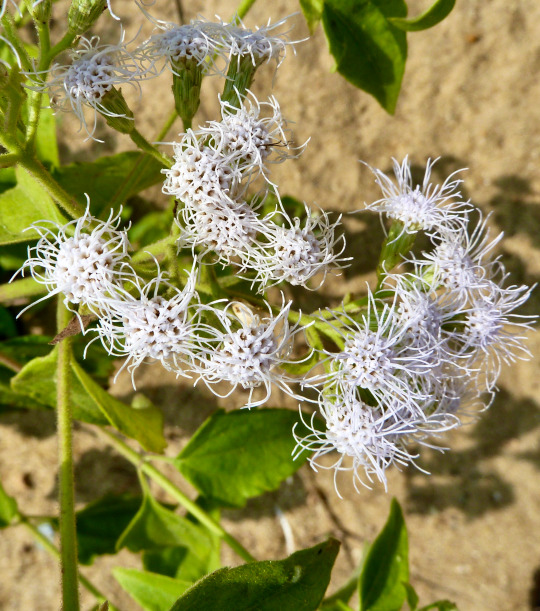
Blue[ish] Mistflower .. [1 / 2]
A variant of Conoclinium coelestinum growing far from its ostensible home in North America, on St.Mary's Island near Malpe, KA.
#Panasonic#Lumix#ZS-7#botanical#St.Mary's Island#Malpe#Udupi#Karnataka#India#flora#Mistflower#Conoclinium coelestinum#cropped
1 note
·
View note
Photo

Conoclinium coelestinum, the blue mistflower, is a North American species of herbaceous perennial flowering plant in the sunflower family. It was formerly classified in the genus Eupatorium, but phylogenetic analyses in the late 20th century research indicated that that genus should be split, and the species was reclassified in Conoclinium. (at Theodore Roosevelt Island) https://www.instagram.com/p/CkbJEaPAE70MGHZ7V3g7fJK-YK9n6Ivb9oi-a40/?igshid=NGJjMDIxMWI=
0 notes
Text
Garden log 6/13/23


New plantings!
Blue mistflower (Conoclinium coelestinum) inside the garden fence, southwest corner. Will need to keep watered in summer, but this spot is wet in winter/spring, so I hope they'll do well once established. Added composted manure from the back pile, as the soil is poor there.
And swamp sunflower (Helianthus angustifolius) by the drive gate, where it's rarely dry. Little picket fence to mark it while it gets established, & protect from the mower. Added only grass mulch. Both from neighborhood plant swap. Watered in well.

New row of butter beans, with composted manure over hoed up soil. Beans soaked ~6 hours before planting. Been watered twice since.
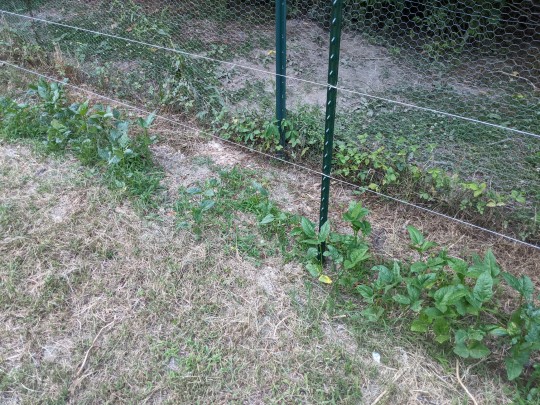

Field pea vigor comparison. Leftmost: white ones. Middle: fatties. Right: standard purple hull. Varieties change at the fence posts. The two wimpy varieties are in a little more shade, thought still seems like plenty of sun, and they get a lot of dust kicked up onto them from the chickens bathing right outside that fence line. But the soil should be about the same, so idk. Perhaps I'll give them some compost, or make manure tea.
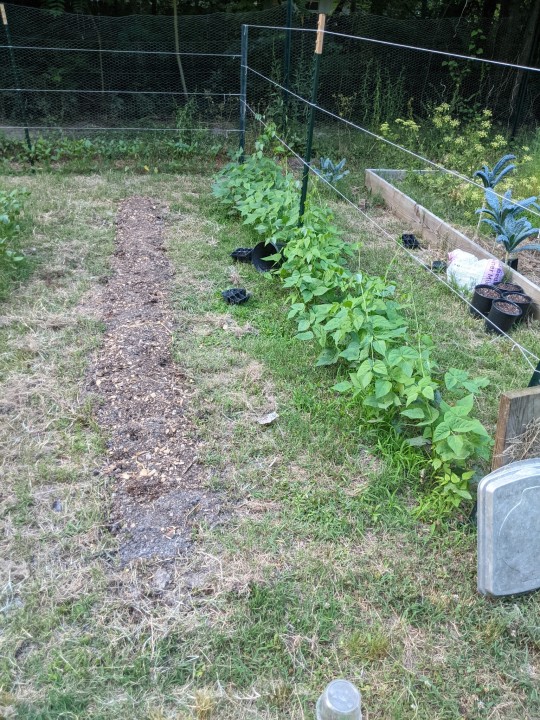
Look at my pretty bean babies grabbing onto their new supports. Go beans go!
Also watered the pussywillows. All are still alive (even the one I weed whacked), though growing slower than I'm used to with black willow. Perhaps this is normal.
#native plants#garden log#field peas#purple hull peas#flower gardening#vegetable gardening#butter beans#garden2023
5 notes
·
View notes